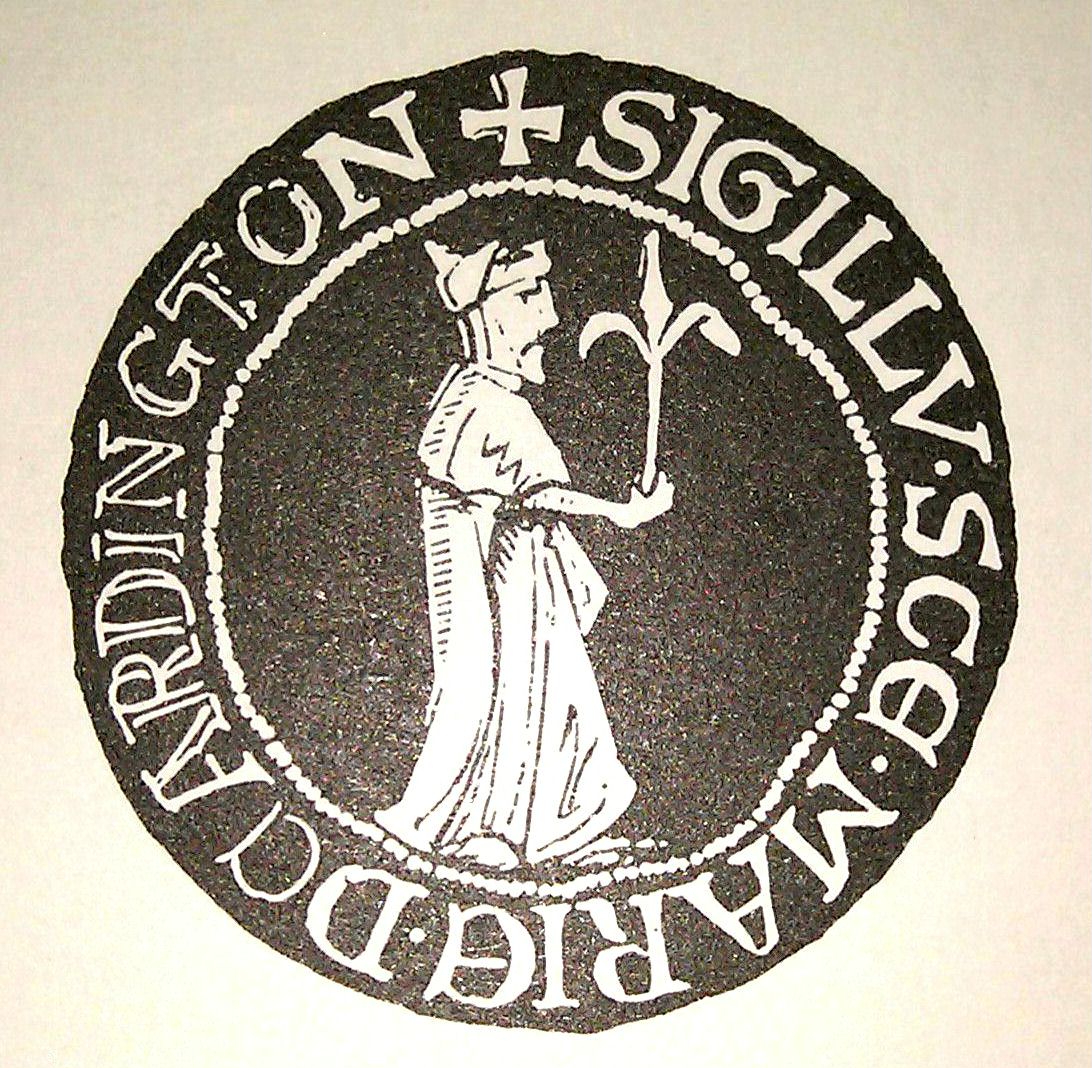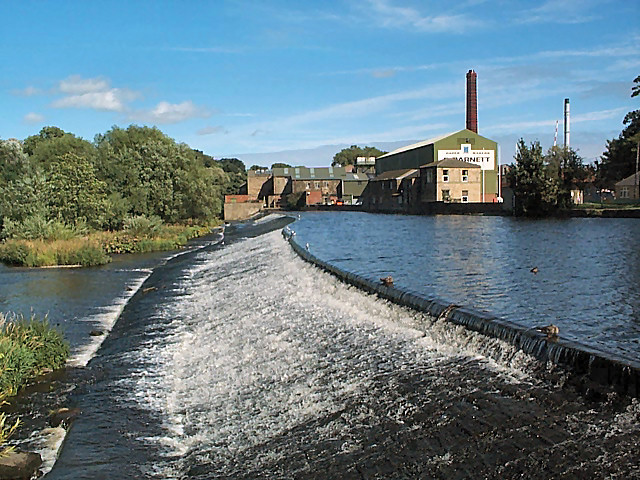|
Arthington
Arthington is a small village in Wharfedale, in the City of Leeds metropolitan borough in West Yorkshire, England. It is a civil parish which, according to the 2011 census, had a population of 532 and is in the LS21 postcode district with Otley as its post town. It is in the Otley ward of the City of Leeds, and the Leeds North West parliamentary constituency. Geography The village is a small collection of dwellings and farms along the A659 road (Arthington Lane) running from Pool-in-Wharfedale in the West to Harewood in the East, and south of a section of the River Wharfe. Up Black Hill Road to the south is a working stone quarry. Etymology The name ''Arthington'' is first attested in the Domesday Book as ''Hardinctone'', ''Ardintona'' and ''Ardinton''. The first element of the name comes from the Old English personal name ''Eard'', a nickname form of longer names like ''Eardwulf''; the connecting element ''-ing-'', used to indicate Eard's association with the place; and ... [...More Info...] [...Related Items...] OR: [Wikipedia] [Google] [Baidu] |
Arthington Priory
Arthington Priory was an English monastery which was home to a community of nuns in Arthington, West Yorkshire, founded in the mid-12th century. The priory land is occupied by a residence called "Arthington Hall", which was built around 1585, and little, if anything, remains of the priory. The site of the priory church is possibly now occupied by a farmhouse called The Nunnery. The community was the only one of nuns of the Abbey of Cluny, Cluniac Religious congregation, congregation in Yorkshire and one of two in England. It was established through a grant by Peter de Arthington. Foundation Peter de Arthington gave the nuns ''"the place the whilk the said abby is byggyd on, with all the appurtenaunces".'' Peter's son Serlo confirmed and added to his father's gift and, in turn, his own son Peter confirmed the earlier gifts and added ''"of land in Tebecroft, and also all the watyre that thai may lede to make yam a milne with, and to thair other usez necessarez."'' The church at Ma ... [...More Info...] [...Related Items...] OR: [Wikipedia] [Google] [Baidu] |
Cookridge
Cookridge is a suburb of north-west Leeds, West Yorkshire, England, north of the Leeds Outer Ring Road. In 1715 Ralph Thoresby described it as a village four miles from Leeds and three from Otley, dating from 1540.Ralph Thoresby (1715) ''Ducatus Leodiensis: or, the topography of the ancient and populous town and parish of Leedes, and parts adjacent in the West Riding of York'', pages 157 to 163 A mixture of suburban and council owned properties on the border with Holt Park and Tinshill, the area sits in both the Adel & Wharfedale ward of Leeds City Council and the Leeds North West parliamentary constituency. Before 2004, the area sat within Cookridge ward, named after the area. Nearby places include Adel, Holt Park, Tinshill, Horsforth, Bramhope, Moor Grange and Ireland Wood. Cookridge is one of the highest points in Leeds, with the elevation rising to above sea level close to the water tower on the eastern edge of the suburb. Cookridge holds an annual scarecrow festi ... [...More Info...] [...Related Items...] OR: [Wikipedia] [Google] [Baidu] |
Creskeld Hall
Creskeld Hall is a grade II listed Country House located in Arthington, near Otley, West Yorkshire, England. Etymology The place-name is first attested in the twelfth century, as ''Creskeld'' and ''Creskelde''. The name comes from the Old English words ''cresse'' (' cress') and ''kelde'' ('spring, well', itself a borrowing of Old Norse ''kelda''). Thus the name once meant 'spring with cress growing nearby'. The place-name thus suggests that the settlement dates back to before the Norman Conquest of England. A spring of fresh water flows past the Hall all year round; and watercress grows in abundance in the streams and water gardens. History In 1189, Hugo de Creskeld gave all his land at Creskeld with an annual rent of 6d and a common pasture of 260 sheep to Kirkstall Abbey. A chapel was attached to the house before the end of the 12th century. The Manor House was leased to Sir Richard de Goldsbro and in 1352 a deed was executed between Sir Richard de Goldsboro and Rober ... [...More Info...] [...Related Items...] OR: [Wikipedia] [Google] [Baidu] |
Pool-in-Wharfedale
Pool-in-Wharfedale or Pool in Wharfedale, usually abbreviated to Pool, is a village and civil parish in the Lower Wharfedale area, north of Leeds city centre, north-east of Bradford, and east of Otley. It is in the City of Leeds metropolitan borough, West Yorkshire and within the historic boundaries of the West Riding of Yorkshire. It is in the LS21 (Otley) postcode district. Pool in Wharfedale is connected to the rest of West Yorkshire and surrounding areas by trunk roads and buses. It had a railway station, which linked the village to Leeds, until it closed as part of the Beeching Axe, but Weeton railway station is nearby. It had a population of 2,284 at the 2011 Census, up from 1,785 in 2001. Pool is a scenic village and enjoys views in most directions, including The Chevin, the Arthington Viaduct and Almscliffe Crag. Running past the outskirts of Pool is the River Wharfe, which is prone to flooding. Nearby is Pool Bank, a steep hill. The village amenities includes one ... [...More Info...] [...Related Items...] OR: [Wikipedia] [Google] [Baidu] |
Adel, Leeds
Adel is a suburb of Leeds, West Yorkshire, England. To its immediate south is Weetwood, to the west are Cookridge and Holt Park, to the east are Alwoodley and Moortown, and to the north are Bramhope, Arthington and Eccup. It forms part of the Leeds City Council ward of Adel & Wharfedale and the parliamentary constituency of Leeds North West. In common with many areas of Leeds it is not easy to define the boundaries of Adel, but Adel Church and the two schools are well to the east of ''Otley Road'', the A660, although the post office is on that road. History Adel is situated near the site of a Roman fort, the ancient road from Tadcaster to Ilkley passing nearby. (The footpath by the side of Long Causeway was said to be made from the original Roman stones, until they were removed by the council in the 1960s because they were unsafe. Some of the footpath has been replaced, starting at the junction between Long Causeway and Stairfoot Lane, and continuing up to the entrance o ... [...More Info...] [...Related Items...] OR: [Wikipedia] [Google] [Baidu] |
City Of Leeds
The City of Leeds is a city and metropolitan borough in West Yorkshire, England. The metropolitan borough includes the administrative centre of Leeds and the towns of Farsley, Garforth, Guiseley, Horsforth, Morley, Otley, Pudsey, Rothwell, Wetherby and Yeadon. It has a population of (), making it technically the second largest city in England by population behind Birmingham, since London is not a single local government entity. It is governed by Leeds City Council. The current city boundaries were set on 1 April 1974 by the provisions of the Local Government Act 1972, as part a reform of local government in England. The city is a merger of eleven former local government districts; the unitary City and County Borough of Leeds combined with the municipal boroughs of Morley and Pudsey, the urban districts of Aireborough, Garforth, Horsforth, Otley and Rothwell, and parts of the rural districts of Tadcaster, Wharfedale and Wetherby from the West Riding of Yorkshire. ... [...More Info...] [...Related Items...] OR: [Wikipedia] [Google] [Baidu] |
Otley
Otley is a market town and civil parishes in England, civil parish at a bridging point on the River Wharfe, in the City of Leeds metropolitan borough in West Yorkshire, England. Historic counties of England, Historically a part of the West Riding of Yorkshire, the population was 13,668 at the 2011 census. It is in two parts: south of the river is the historic town of Otley and to the north is Newall, West Yorkshire, Newall, which was formerly a separate township. The town is in lower Wharfedale on the A660 road which connects it to Leeds. The town is in the Otley and Yeadon (ward), Otley and Yeadon ward of Leeds City Council and the Leeds North West (UK Parliament constituency), Leeds North West UK Parliament constituencies, parliamentary constituency. History Toponymy Otley's name is derived from Otto, Otho, Othe, or Otta, a Saxon personal name and ''leah'', a woodland clearing in Old English. It was recorded as ''Ottanlege'' in 972 and ''Otelai'' or ''Othelia'' in the ''Dom ... [...More Info...] [...Related Items...] OR: [Wikipedia] [Google] [Baidu] |
Wharfedale
Wharfedale ( ) is the valley of the upper parts of the River Wharfe and one of the Yorkshire Dales. It is situated within the districts of Craven and Harrogate in North Yorkshire, and the cities of Leeds and Bradford in West Yorkshire. It is the upper valley of the River Wharfe. Towns and villages in Wharfedale (downstream, from west to east) include Buckden, Kettlewell, Conistone, Grassington, Hebden, Bolton Abbey, Addingham, Ilkley, Burley-in-Wharfedale, Otley, Pool-in-Wharfedale, Arthington, Collingham and Wetherby. Beyond Wetherby, the valley opens out and becomes part of the Vale of York. The section from the river's source to around Addingham is known as ''Upper Wharfedale'' and lies in North Yorkshire and in the Yorkshire Dales National Park. The first or so is known as Langstrothdale, including the settlements of Beckermonds, Yockenthwaite and Hubberholme, famous for its church, the resting place of the writer J. B. Priestley. As it turns southwards, the Wharfe the ... [...More Info...] [...Related Items...] OR: [Wikipedia] [Google] [Baidu] |
Leeds North West (UK Parliament Constituency)
Leeds North West is a constituency in the City of Leeds which has been represented in the House of Commons of the UK Parliament since 2017 by Alex Sobel, of Labour Co-op. Boundaries 1950–1955: The County Borough of Leeds wards of Far Headingley, Hyde Park, and Kirkstall. 1955–1974: The County Borough of Leeds wards of Far Headingley, Hyde Park, Kirkstall, Meanwood, and Moortown. 1974–1983: The County Borough of Leeds wards of Cookridge, Headingley, Kirkstall, Moortown, and Weetwood. 1983–2010: The City of Leeds wards of Cookridge, Headingley, Otley and Wharfedale, and Weetwood. 2010–present: The City of Leeds wards of Adel and Wharfedale, Headingley, Otley and Yeadon, and Weetwood. The constituency covers the north western part of the metropolitan borough of the City of Leeds, West Yorkshire. It stretches from Yeadon in the north west and Otley in the north east to Headingley in the south in terms of major settlements. History The constituency was crea ... [...More Info...] [...Related Items...] OR: [Wikipedia] [Google] [Baidu] |
Eccup
Eccup is a village in the civil parish of Alwoodley and north of the City of Leeds, West Yorkshire, England. It is just north of Alwoodley and east of Bramhope and Golden Acre Park. Eccup is at the north-west edge of Eccup Reservoir. Etymology The place-name ''Eccup'' is first attested in the Domesday Book of 1086 as ''Echope''. It is thought to derive from an Old English personal name ''Ecca'' + ''hōp'' 'enclosed land amid unpromising land; a small, enclosed valley'. It would therefore mean something like 'Ecca's patch of good land'. From the sixteenth century the area up to the River Wharfe was known as ''Adel cum Eccup''.www.leeds.gov.uk Adel NDS Revised Draft for Consultation April 2014. Adel is abou ... [...More Info...] [...Related Items...] OR: [Wikipedia] [Google] [Baidu] |
Italianate Architecture
The Italianate style was a distinct 19th-century phase in the history of Classical architecture. Like Palladianism and Neoclassicism, the Italianate style drew its inspiration from the models and architectural vocabulary of 16th-century Italian Renaissance architecture, synthesising these with picturesque aesthetics. The style of architecture that was thus created, though also characterised as "Neo-Renaissance", was essentially of its own time. "The backward look transforms its object," Siegfried Giedion wrote of historicist architectural styles; "every spectator at every period—at every moment, indeed—inevitably transforms the past according to his own nature." The Italianate style was first developed in Britain in about 1802 by John Nash, with the construction of Cronkhill in Shropshire. This small country house is generally accepted to be the first Italianate villa in England, from which is derived the Italianate architecture of the late Regency and early Victorian eras. ... [...More Info...] [...Related Items...] OR: [Wikipedia] [Google] [Baidu] |
Coptic Orthodox Church In Britain And Ireland
The Coptic Orthodox Church of Alexandria has several churches in Great Britain and Ireland under the jurisdiction of four diocesan bishops. The first liturgical service prayed in the British Isles took place in London on 10 August 1954, officiated by delegates attending the general assembly of the World Council of Churches. The foundation of the church and its establishment of a parish started with a liturgical service held in London in February 1969, prayed by the Bishop of Christian Education, Shenouda (later Pope Shenouda III of Alexandria, the 117th pope of the church). Regular services only began in 1971 when the first resident Coptic priest, Father Antuniyus al-Suryani (later Metropolitan Pakhomious of Beheira), celebrated the Divine Liturgy at Saint Andrew's Church, Holborn, London. In 1976, the church council purchased a building in Kensington, establishing the Coptic Orthodox parish of St Mark; this was served by three monastic priests, who later on became members of the ... [...More Info...] [...Related Items...] OR: [Wikipedia] [Google] [Baidu] |









